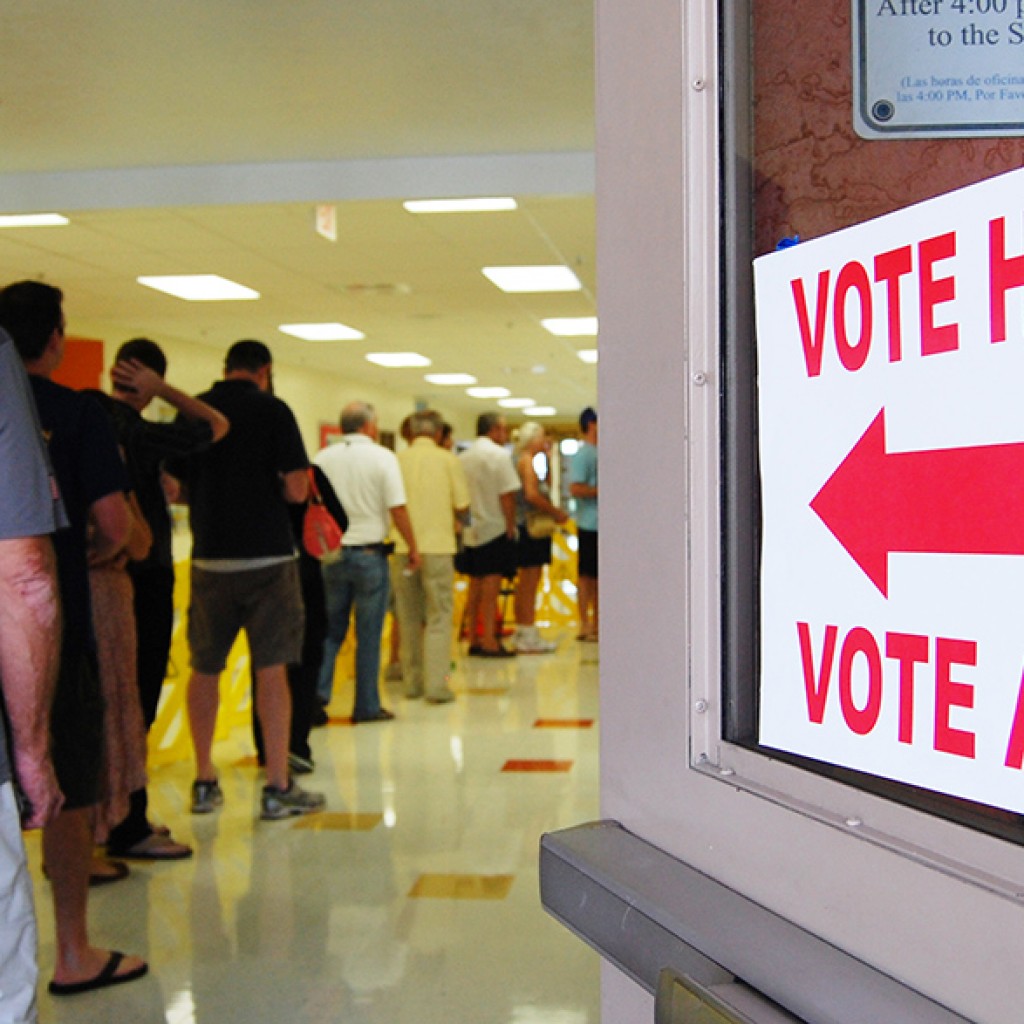
The record voter turnouts being seen in Orange, Osceola, and many other counties for early- and mail-in voting is offering the best hope that on Tuesday Florida might not see many or any of the disastrous and embarrassing three-, four-, and five-hour voting lines that plagued key precincts in the presidential election of 2012.
You remember 2012: while voting went relatively smoothly in most of Florida’s 67 counties and in the vast majority of its precincts, enormous crunches hit others in that general election.
In Orange, Osceola, Lee, Miami-Dade, and a handful of other counties, voting bogged down, lines snaked backward, and hours and hours dragged on for many voters. Determined voters stuck it out, while thousands of others turned away in frustration or impatience, abandoning their franchises.
An Orlando Sentinel analysis in 2013 found more than 740 Florida voting precincts in Nov. 2012 — voting homes to nearly 2 million voters — had lines more than 90 minutes long by the end of the day. About a quarter of those lines were three hours long by the end of the day, some longer. One Lee County precinct stayed open past 2 a.m. the next morning — more than seven hours after polls closed — to get everyone through the line.
And it might have been worse for others who didn’t wait out those lines. An Ohio State University researcher, Theodore Allen, analyzed data from the election and reached the conclusion that as many as 201,000 Florida voters did not vote in 2012 because the lines were too long.
This year, Secretary of State Ken Detzner and his Florida Division of Elections team declined to talk about 2012, even to discuss why they may be optimistic it will not repeat itself in 2016.
Supervisors of elections are expressing confidence, especially since in many counties more than half the voters this year have voted even before Election Day dawns.
“Given the fact that there has been quite an effort in most counties if not all to strengthen the awareness of voting by mail coupled with a ballot that is not too-terribly long, I believe, even if the remainder of the voting public would give us 100 percent return, it would not equate to a long line,” said Chris Chambless, Clay County supervisor of elections, who is president of the Florida State Association of Supervisors of Elections.
The political parties, too, are expressing optimism that there will be no long lines this year, though Republican Party of Florida Chairman Blaise Ingoglia began his statement with a denial there was any significant loss of votes because of long lines in 2012.
“First and foremost, I disagree with the “analysis” that 200,000 voters didn’t vote in 2012 because of long lines, especially since we have 30 days of voting in the State of Florida. The RPOF takes the right to vote very seriously and the necessary reforms and improvements were taken to ensure that every person is able to exercise their right to vote in a timely manner,” Ingoglia said. “Currently, over two-thirds of the anticipated voters have already voted this year. The remaining third should be able to cast their vote in a timely manner compared to 2012.”
Democrats just stuck to optimism.
“Given the substantial increase in early voting and voting by mail, we’re confident we won’t see a repeat 2012’s long lines,” said Florida Democratic Party spokesman Max Steele. “Voting in Florida is easier and more convenient than ever and we encourage every Floridian to make their voice heard tomorrow.”
Those are just a couple reasons elections officials are optimistic that three-hour lines won’t happen this year.
The first is the tremendous increase in early and mail-in voting. Much of that is driven strategically by state and county elections officials, the political parties, and the campaigns all trying to encourage people to vote early or by mail, and to make it easier.
It also may be driven by voters’ own memories of those 2012 lines. If you spend two hours in line waiting to vote, next time out you’ll be thinking about how to avoid such lines. The Florida Legislature, pressured by Democrats, re-established the 14-day early-voting period, up from the eight days that were allowed in 2012, and also allowed for increased locations. And mail-in voting — once known by the intimidating phrase “absentee voting” — has kicked up to unprecedented popularity.
But it’s more than that. The 2012 general election ballot was six or more pages in most counties, weighted down by 11 statewide initiatives and often several local or county initiatives. This year there are only four statewide initiatives — a lot less for each and every voter to have to stop, read and figure out, said Bill Cowles, supervisor of elections for Orange County.
“So where we had the 16 questions in 2012 … we had the [Florida] constitutional stuff, and we had the [Orange County] charter review questions, every voter got three ballot pieces of paper printed on both sides. This election, each voter is getting two pieces of paper, and it’s printed on both sides of the first page and only on the front of the second. So the ballot is half the size,” Cowles said. “So that means it doesn’t take as long to mark it, and it doesn’t take as long to insert the ballots into the tabulators.”
Osceola County Supervisor of Elections Mary Jane Arrington conceded there may be some lines caused by rush-hour crowds, but said she expects they shouldn’t last.
“Voting is like traffic; we all want to go to the same place at the same time. With the large numbers of voters who have voted by mail and voted early, we are hoping for fewer lines on Election Day. There may be lines at some of the locations, but we expect they will dissipate quickly,” she said. “We have staffed enough people and equipment at each location to keep things moving smoothly.”



